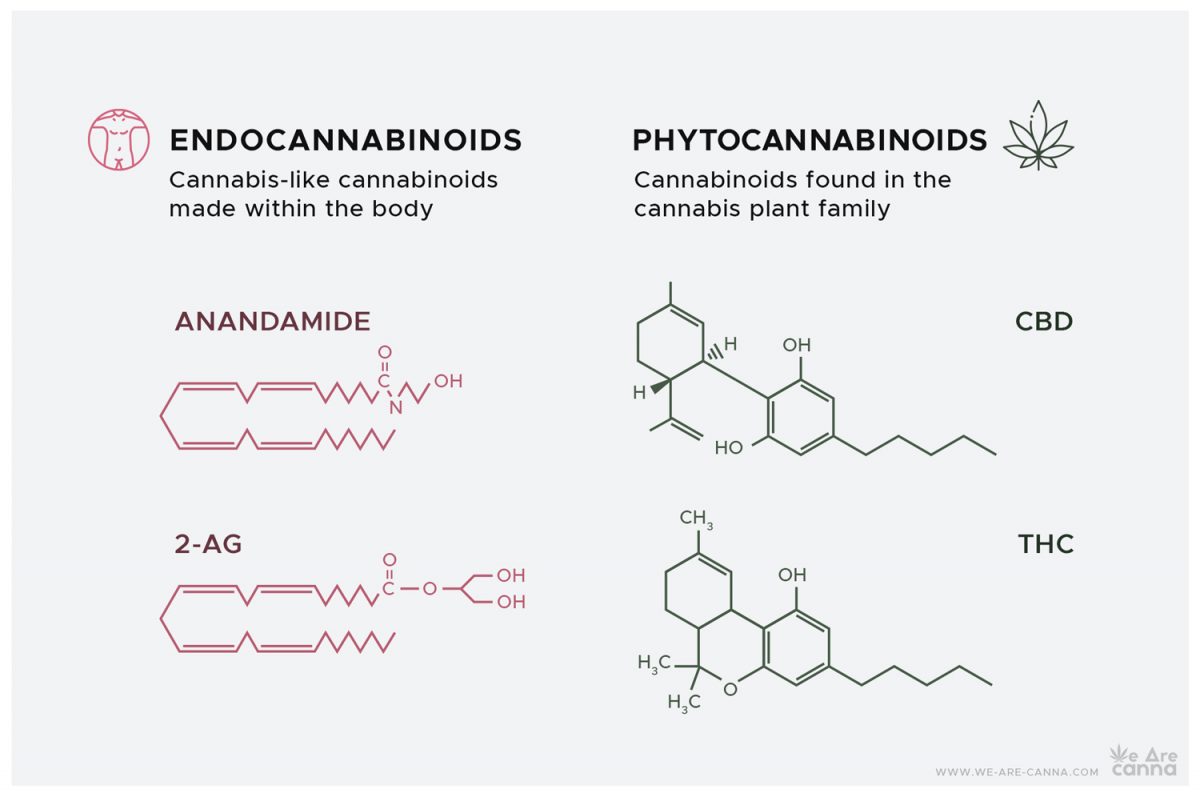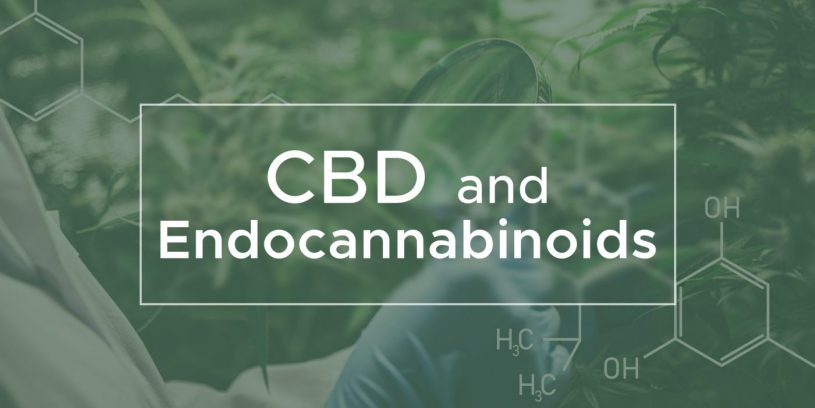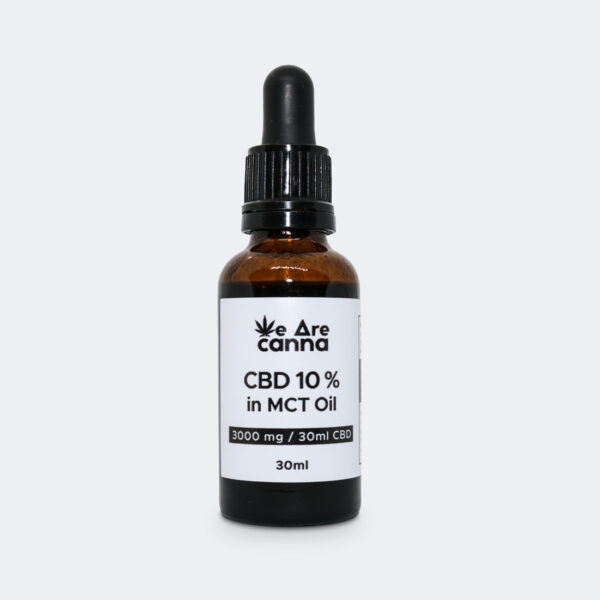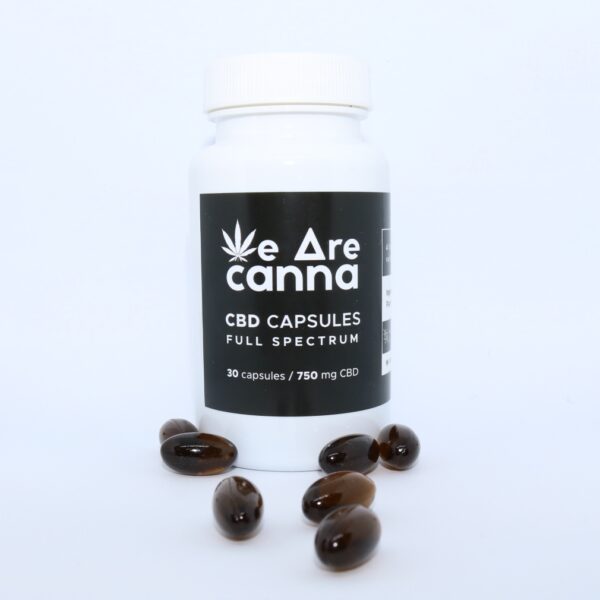CBD, THC, and Endocannabinoids
CBD cannabidiol is a non-psychotropic, non-addictive phytocannabinoid. [1] CBD is known as an inverse agonist of the CB1 and CB2 cannabinoid receptors. CBD and THC are the most studied phytocannabinoids that occur naturally in cannabis. Although CBD and THC are found in the same plant, they act differently on cannabinoid receptors and provide different effects on the body and endocannabinoids. For example, THC stimulates CB1 cannabinoid receptors, and CBD blocks the activity of these receptors, thereby reducing the psychoactive effects of THC. [2]
Research over the past few decades has shown that CBD affects not only the endogenous cannabinoid system but other body functions as well. The use of CBD products is beneficial in case of a variety of health problems, including neurological, neurodegenerative, inflammatory, and oncological diseases.
One of the greatest advances in science is the use of CBD to treat rare forms of epilepsy in children, reducing harm in case of brain damage. [3] [4]
With its neuroprotective properties, CBD helps protect the nervous system from injuries such as trauma, alcohol-related damage, and more. [5] [6] Antipsychotic and anxiolytic properties and stimulation of serotonin production have been shown to benefit patients with schizophrenia, depression, post-traumatic stress disorder, or panic attacks. [7] [8]
Cannabidiol is known as an immunomodulator and may, therefore, be effective for use in immunocompromised or autoimmune diseases. [9]
The anti-inflammatory effect of CBD provides strong therapeutic properties in the case of arthritis, inflammatory bowel diseases, atherosclerosis. [10] [11]
Antioxidant properties fight free radicals and reduce the damage they cause, thus stopping the body’s aging process. [12]
There is a need for as much research as possible on the benefits of CBD and other cannabinoids in the case of cancer, but it has already been shown that CBD not only reduces the side effects of chemotherapy and radiotherapy but also helps stop the spread of cancer cells and affects their apoptosis. [13] [14]
CBD oil provides many different properties and acts very widely in the body, but perhaps the most valued property of CBD is its ability to inhibit certain enzymes (fatty acid amide hydrolase or FAAH) that break down Anandamide.
Inhibition of FAAH enzymes increases the concentration of Anandamide in the body and keeps it active for a longer time.
Anandamide (Arachidonylethanolamide)
Anandamide is an endocannabinoid that occurs naturally in the human body and is one of the elements of the endocannabinoid system. The word “Ananda” in Sanskrit means joy, bliss, pleasure. This is why this endocannabinoid is responsible for our good emotional well-being, sleep, appetite, or pain relief. [15] Anandamide also inhibits the growth of certain cancer cells. [16]
Discovery of anandamide in 1992 was an important breakthrough for science, leading to a better understanding of the interactions of phytocannabinoids and endocannabinoids with the human endocannabinoid system.
Anandamide is a partial agonist of CB1 and CB2 receptors. Stimulation or blockade of receptors in the endocannabinoid system affects the functioning of our internal systems and organs and regulates processes such as body temperature, hormone production, sleep quality, inflammatory processes, blood quality, metabolism, brain activity, reproduction, appetite, and so on. [17]
The goal of the endocannabinoid system is the constant dynamic maintenance of the body’s internal mechanism (homeostasis).
In the absence of endocannabinoids such as Anandamide and 2-Ag, the endocannabinoid system may not function properly and clinical endocannabinoid deficiency syndrome may occur. Endocannabinoid deficiency syndrome can be a cause of diseases such as fibromyalgia, Parkinson’s, irritable bowel syndrome, migraine. [18]
Anandamide increases the feeling of pleasure and contributes to a proper emotional state, making it useful in relieving the symptoms of depression, schizophrenia, or other mental illnesses. [19]
The endocannabinoid system is known to play important functions in getting pregnant, during pregnancy and after childbirth. Endocannabinoids are responsible for the proper formation of the fetus in the body. Anandamide levels and CB1 receptors increase in the uterus during pregnancy. The right amount of Anandamide helps ensure a fluent pregnancy and reduces the chances of miscarriage.
In the first weeks, the fetus begins to form its endocannabinoid system, and naturally produces endocannabinoids that contribute to the body’s development. High levels of endocannabinoids are detected in breast milk after childbirth, and 2-AG is thought to be responsible for initiating the need for breastfeeding. This means that this endocannabinoid is responsible for baby’s need and ability to suckle. [20]
2-Ag (2-Arachidonoylglycerol)
In 1995 a second endocannabinoid, 2-Ag, which is a full agonist of CB1 and CB2 receptors, has been discovered and is therefore sometimes compared to THC in its form of action. Activation of CB1 and CB2 cannabinoid receptors regulates processes such as inflammation, assimilation of information and memory, epileptogenesis (onset and spread of abnormal neuronal outflows), neuroprotection, stress and anxiety, pain, appetite and metabolism, neuroinflammation, addiction and abstinence processes. [21]
Experiments to date explain the link between cannabinoids and certain receptors. The findings of the research provide an opportunity to develop new, innovative medications and treatments. Probably most researchers are interested in the potential of phytocannabinoids and endocannabinoids in the fight against oncological diseases. [22]

Summary
Cannabinoids (phytocannabinoids), found in cannabis, regulate the amount of naturally occurring cannabinoids (endocannabinoids) in our body and their activity.
Cannabis is a plant that, due to its unique active ingredients, has a wide range of effects on all mammalian and avian organisms and provides a variety of therapeutic properties.
Endocannabinoids are part of our Endocannabinoid system they naturally occur in our body. Endocannabinoids, the same like phytocannabinoids help to maintain homeostasis.
The proper functioning of the endogenous cannabinoid system (endocannabinoid system) is vital. Due to environmental or genetic factors, the human endocannabinoid system is weakened and, without timely assistance, influences the development of certain health problems. Proper nutrition, physical activity, and well-balanced cannabis products help maintain the functioning of the endocannabinoid system – one of the most important body systems. [23]
Source
[1] https://www.who.int/medicines/access/controlled-substances/CannabidiolCriticalReview.pdf
[2] https://pubmed.ncbi.nlm.nih.gov/9336020/
[3] https://www.ncbi.nlm.nih.gov/pmc/articles/PMC6143823/
[4] https://we-are-canna.com/lt/cbd-apsaugo-smegenis-nuo-pazeidimu/
[5] https://www.ncbi.nlm.nih.gov/pmc/articles/PMC6554654/
[6] https://www.ncbi.nlm.nih.gov/pmc/articles/PMC5938896/
[7] https://www.ncbi.nlm.nih.gov/pmc/articles/PMC6966847/
[8] https://journals.sagepub.com/doi/10.1177/2045125319881916
[9] https://www.ncbi.nlm.nih.gov/pmc/articles/PMC7173676/
[10] https://www.pnas.org/content/97/17/9561.short
[11] https://www.ncbi.nlm.nih.gov/pmc/articles/PMC5193087/
[12] https://we-are-canna.com/lt/kanabinoidai-stiprus-antioksidantai-butini-musu-organizmui/
[13] https://www.ncbi.nlm.nih.gov/pmc/articles/PMC6387667/
[14] https://www.ncbi.nlm.nih.gov/pmc/articles/PMC6928757/
[15] https://en.wikipedia.org/wiki/Anandamide
[16] https://www.ncbi.nlm.nih.gov/pmc/articles/PMC20983/
[17] https://www.ncbi.nlm.nih.gov/pmc/articles/PMC2241751/
[18] https://www.ncbi.nlm.nih.gov/pmc/articles/PMC5576607/
[19] https://www.ncbi.nlm.nih.gov/pmc/articles/PMC5042796/
[20] https://pubmed.ncbi.nlm.nih.gov/15464041/
Our products
CBD Cannabis Oil in MCT 10 % 3000 mg 30 ml
114.95€ 114.95€Read moreA bottle of CBD Cannabis 10 % 3000 mg CBD 30 ml oil (with a small pipette). Made from certified, hand-picked and organically grown cannabis mixed with coconut oil (MCT) for better absorption of cannabinoids.
This phytocannabinoids extract is a full spectrum extract, professionally made and laboratory-tested to ensure the highest quality and safety.
Discount applies when purchasing more:
CBD Cannabis Oil in MCT 10 % 1000 mg 10 ml
46.59€ 46.59€Add to cartA bottle of CBD Cannabis 10 % 1000 mg CBD 10 ml oil (with a small pipette). Made from certified, hand-picked and organically grown cannabis mixed with coconut oil (MCT) for better absorption of cannabinoids.
This phytocannabinoids extract is a full spectrum extract, professionally made and laboratory-tested to ensure the highest quality and safety.
Discount applies when purchasing more:
CBD Cannabis Oil in MCT 5% 1500 mg 30 ml
68.01€ 68.01€Add to cartA bottle of CBD Cannabis oil (with a small pipette). Made from certified, hand-picked and organically grown cannabis mixed with coconut oil (MCT) for better absorption of cannabinoids.
This phytocannabinoids extract is a full spectrum extract, professionally made and laboratory-tested to ensure the highest quality and safety.
Discount applies when purchasing more:
CBD Capsules 750 mg
51.00€ 51.00€Add to cartHigh-grade CBD / CBDA capsules professionally made and laboratory-tested to ensure the greatest quality and safety.
This product is suitable for those who want to avoid the specific taste of cannabis extracts. Nothing needs to be dosed, we’ve already done it for you.
Discount applies when purchasing more:
Hemp Oil for Pets 250 mg CBD 10 ml (2 bottles)
29.00€ 29.00€Add to cartWe Are Canna full-spectrum CBD oil for pets is a completely natural, excellent source of vitamins and Omega fatty acids.
We all want our pets to be healthy and beautiful. Let’s take care of them by incorporating high-quality CBD products into their daily diet.
CBD soap 100g / 100mg CBD
Original price was: 9.99€.8.99€Current price is: 8.99€. 8.99€Read moreWe Are Canna CBD body soap is another unique, natural, handmade cannabis product made only from the highest quality ingredients, free from GMOs or other harmful substances.
Thanks to the knowledge passed down from generation to generation, the plant that humanity has used for thousands of years and modern technology, we are able to experience what is real, natural, tested and appreciated. CBD soap is made using a 100-year-old manufacturing methodology, which makes this product even more special.
The phytocannabinoids and terpenes in CBD soap, acting in synergy, will give your skin a variety of therapeutic properties, not to mention the pleasant aroma that will captivate everyone. From now on, bathing rituals will be different!







1 Comment